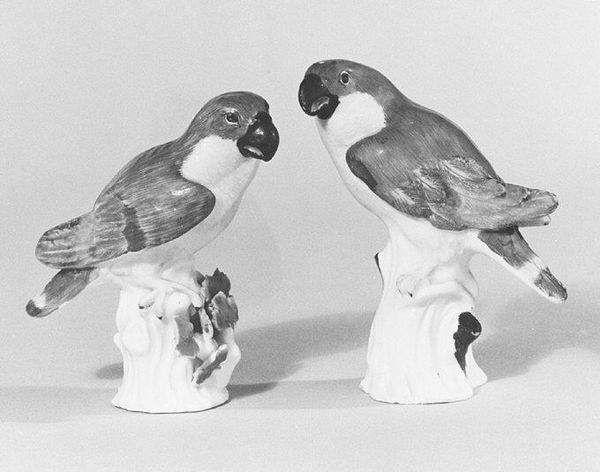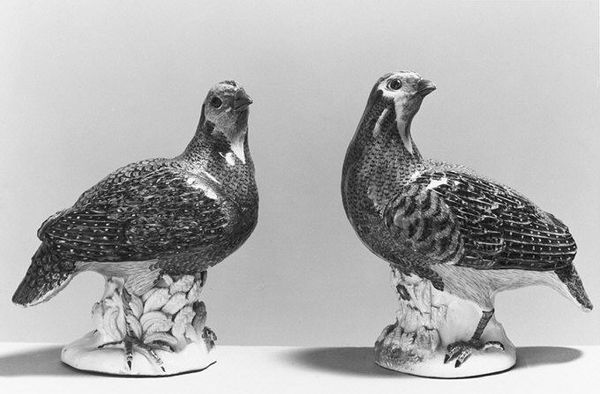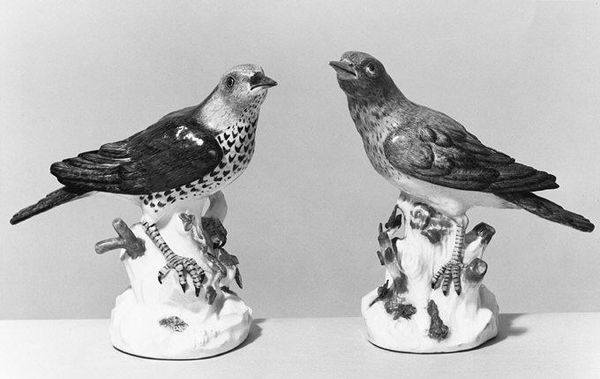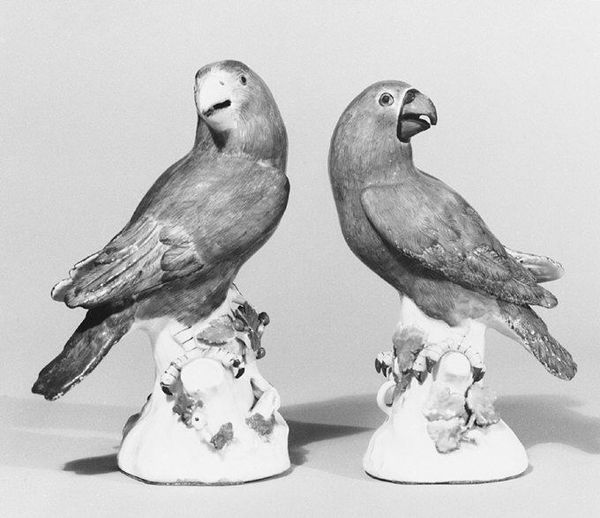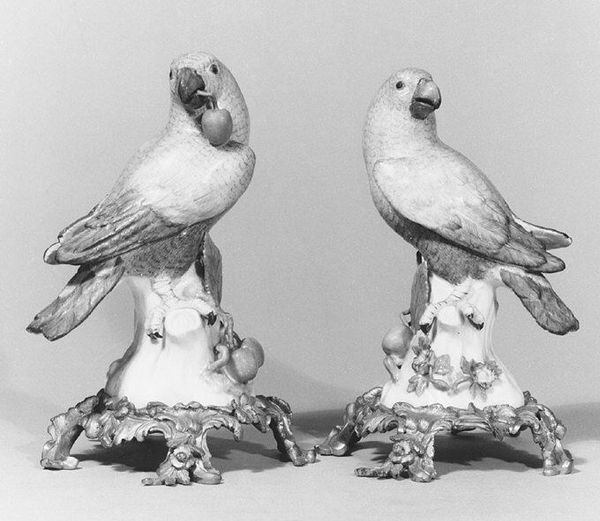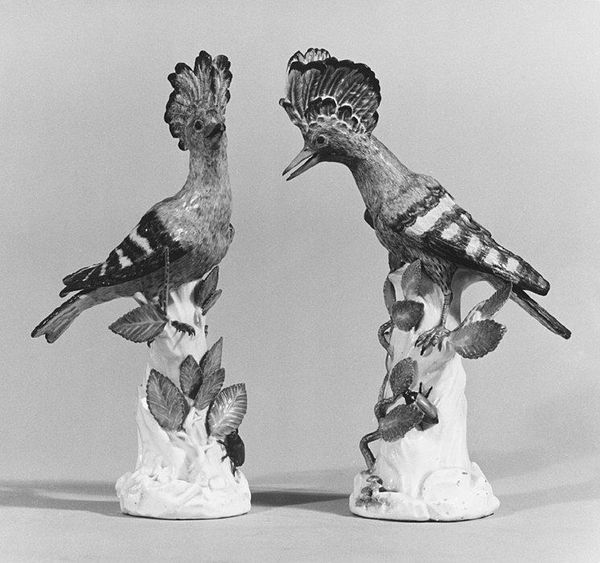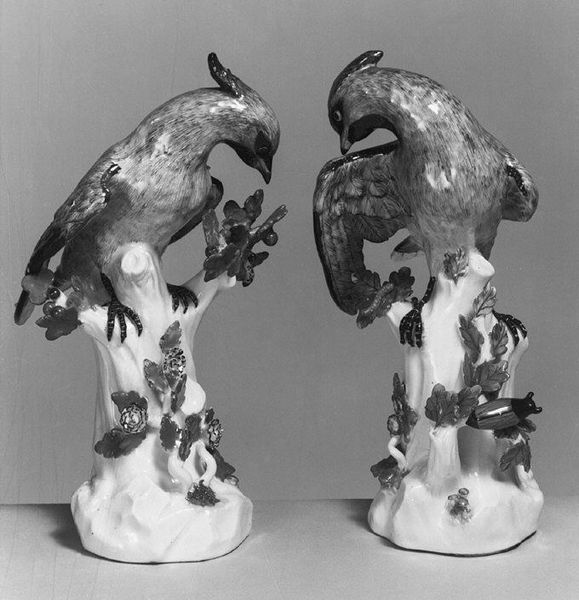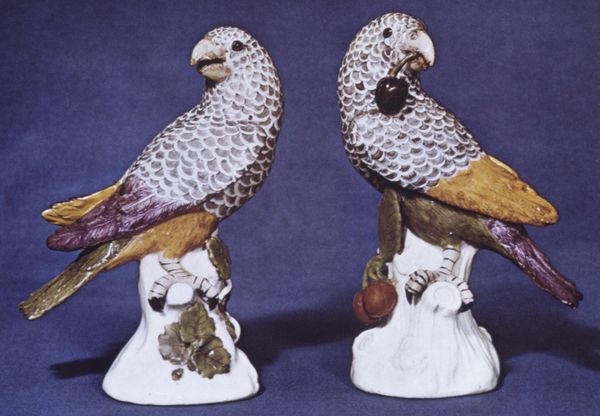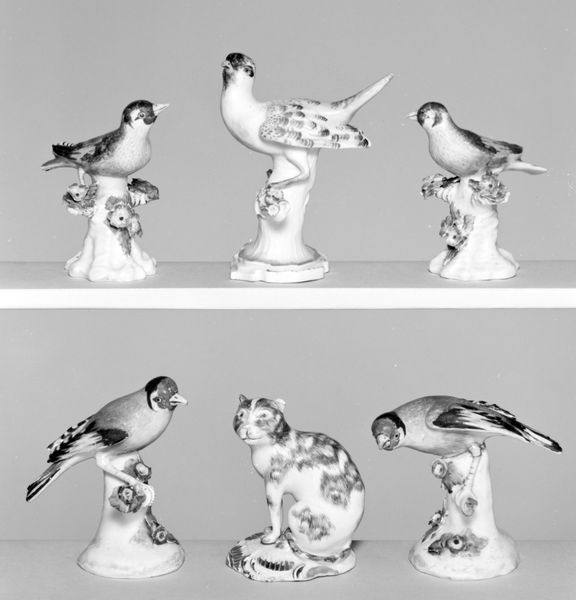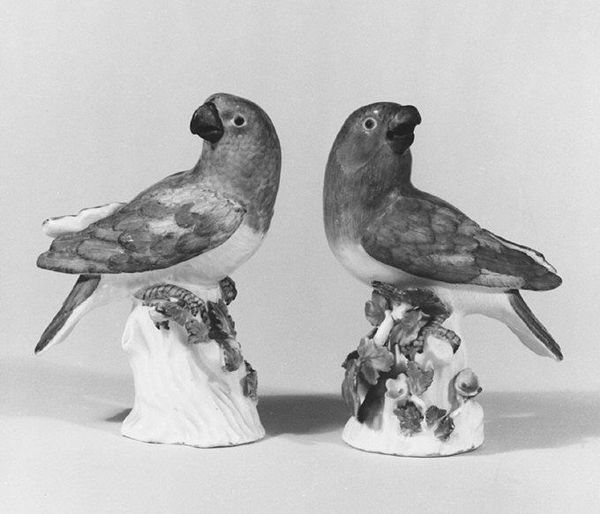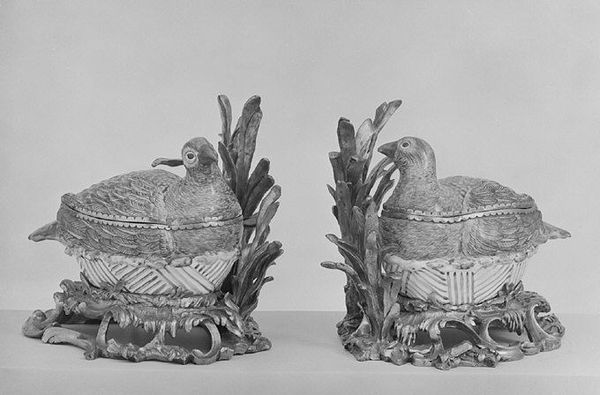
ceramic, porcelain, sculpture
#
3d sculpting
#
3d printed part
#
sculpture
#
ceramic
#
bird
#
porcelain
#
sculptural image
#
b w
#
black and white theme
#
unrealistic statue
#
framed image
#
sculpture
#
black and white
#
decorative-art
#
statue
Dimensions: Overall (confirmed): 8 1/16 x 6 x 5 5/8 in. (20.5 x 15.2 x 14.3 cm)
Copyright: Public Domain
Editor: This is "Thrush (one of a pair)," porcelain sculptures made around 1735-1745 by the Meissen Manufactory. They’re so delicate and carefully posed. How do you interpret these sculptures in the context of their time? Curator: I see these porcelain birds as emblems of privilege and power. Their very existence speaks volumes about the resources and societal structures in place during the 18th century. Think about the intensive labor required, the global trade networks necessary to source materials… Editor: It’s easy to overlook that labor. We often think of art objects detached from production and makers. Curator: Exactly. Consider, too, the broader context of decorative arts during this period. Who were these objects created for? What spaces did they inhabit? These birds likely adorned the homes of the elite, reflecting their refined taste and consolidating their status. Aren't they symbols of dispossession, reminding us whose labour helped shape the European elite's idea of beauty and what was silenced to create them? Editor: That reframes it completely. They seemed innocuous, but you are reminding me to think about the context behind their creation and use. Curator: Furthermore, we can interrogate the colonial implications inherent in the porcelain trade. How did European demand for exotic materials impact global power dynamics? We must see the beauty alongside the social relations which allowed their construction. These "innocent" birds, therefore, become implicated in broader systems of oppression. Editor: I hadn't considered how decorative objects could also perpetuate inequalities. Curator: It forces us to examine art history with a critical lens, asking ourselves not just "what is beautiful?" but "at what cost was this beauty created, and for whom?" Editor: That’s a powerful point to keep in mind when appreciating any historical artifact.
Comments
No comments
Be the first to comment and join the conversation on the ultimate creative platform.
